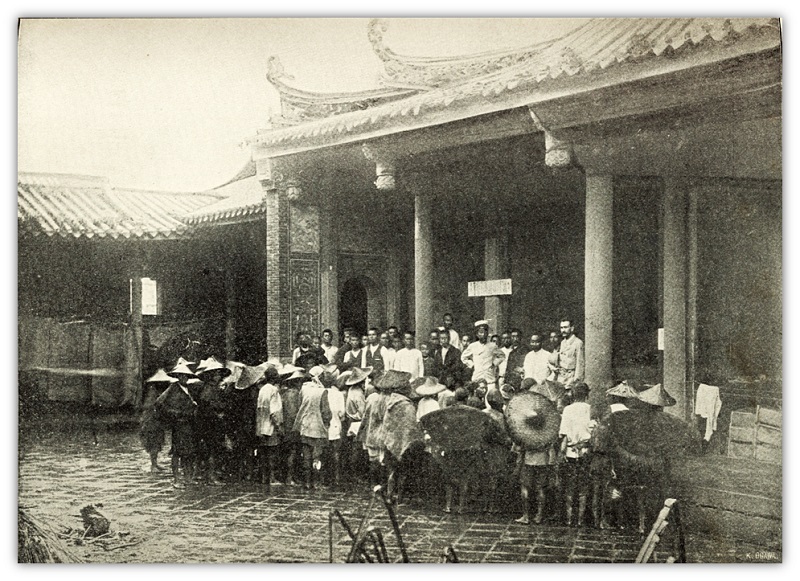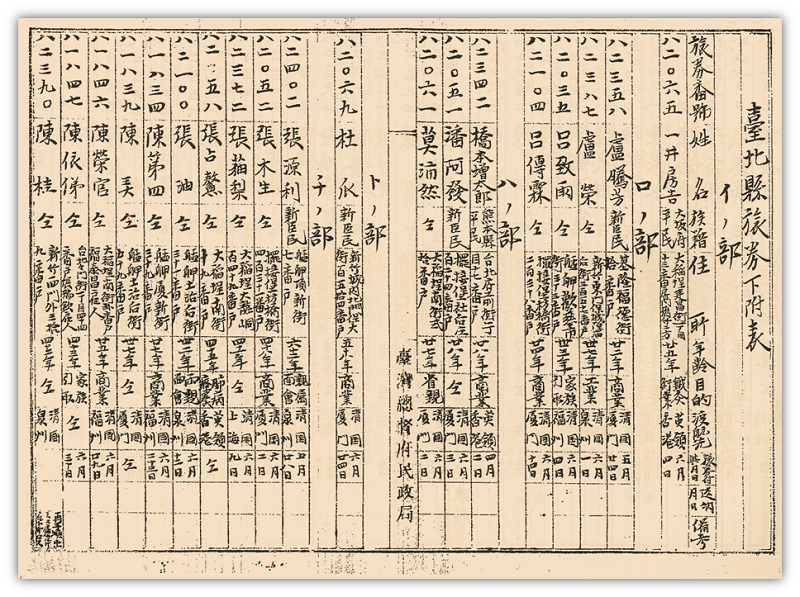|
In 1895, the history of Taiwan has a tremendous change. While the political situation was anxious and unstable, the ruler of Taiwan had changed from Qing Dynasty to the Imperial Japan. For those who had ability or were unwilling to become the subjects of Japan, they chose to seek refuge. As for those who are unable to leave or whose businesses were built in Taiwan for generations, they chose to accept the new political power for the sake of life. All they longed for was only a stable political situation. Regardless of obedience or revolt, it was the choice that they had to make in the course of the pursuit of survival.  In 1895, the Japanese Officer is advising to the Chinese workmen in the Provisional Office in Temple of Confucius, Hsinchu
Source:《征臺軍凱旋紀念帖》(遠藤誠編,東京:裳華房書店、遠藤寫真館,1896年出版),Archives of National Museum of Taiwan History When Japanese received Taiwan, they requested Taiwanese for support logistics, and give advice of Japanese to the Chinese workmen in Temple of Confucius, Hsinchu. The reporter, Davidson, who complained about these “annoying” workmen, stood beside a pillar of the Temple: “At a critical moment of fight, they obstructed unashamedly regimental commands or brigadiers by a sedan chair, and sat leisurely to watch a fight.”
 A Decoration Paper of Li Chun-seng, 1895
Source:Taiwan Sotokufu Archive,Digital archives of the Archives of Institute of Taiwan History Li Chun-seng in Dadaocheng, originated from Xiamen, Fujian Province, came to Taiwan in 1865. He was very successful on Chinese tea trading business. In June 1895, after Tang Ching-sung fled, plunder and theft occurred everywhere; the social order collapsed. Li Chun-seng and other businessmen thus urged the Japanese to enter the city to restore order, maintain life safety and property security. The Sotokufu retained Li Chun-seng’s decoration record in official document.
 Passport Issuing Book from every prefecture of the governor-general house of Taiwan in 1897
Source:臺灣總督府旅券發行簿,Digital archives of the Archives of Institute of Taiwan History 《The treaty of Shomonoseki specified that Japan allowed Taiwanese to leave Taiwan after selling their business within two years. After two years, those who had not emigrated would be viewed as the subjects of Japan. The field of ethnics in the Passport Issuing book from January to June in 1897 shows that Taiwanese had become the “new subjects” of Japan.
 Records of Japan and Qing Dynasty War, Written by Mao Rui-fu in 1896
Source:郭双富庋藏,Digital archives of the Archives of Institute of Taiwan History This records was written by Mao Rui-fu, it taken down and recalled a summary of the war from 1894 to 1895, as well as remembered that the imposing manner of Japanese like splitting bamboo.
|
 |



